Panama Trip
November 16-28, 2007
![]()
Day 1, Friday November 16, 2007
Day
2, Saturday, November 17, 2007
Day
3, Sunday, November 18, 2007
Day
4, Monday, November 19, 2007
Day
5, Tuesday, November 20, 2007
Day
6, Wednesday, November 21, 2007
Day
7, Thursday, November 22, 2007
Day
8, Friday, November 23, 2007
Day
9, Saturday, November 24, 2007
Day
10, Sunday, November 25, 2007
Day 11, Monday, November 26, 2007
Day
12, Tuesday, November 27, 2007
Day
13, Wednesday, November 28, 2007
![]()
Day 11, Monday, November 26, 2007
We departed the Canopy Lodge well before sunrise as it was about a two-hour drive to our destination for the day, Altos del Maria. This location is in a mountainous area to the east of El Valle, requiring a drive south back down to the Pan American Highway, then east to the turnoff for the small town of Sora, then northwest back up into the mountains.

The area is cloud forest and represents one of the easternmost outposts of the Chiriqui Highlands of eastern Costa Rica and western Panama. Unfortunately, like the Cerro Azul area we visited on the first day, this is a housing development for wealthy Panamanians and construction in some areas has cleared large patches of forest. Non-native Impatiens cover virtually any area that has been cleared of undergrowth, as can be seen in the photo below taken by Jeff. While beautiful in color it is sad to see these areas so stripped bare they are almost devoid of bird life. While such large expanses of monoculture are natural in our temperate forests (such as the large beds of Trillium, Spring Beauty, Blootroot, and others), even in its native New Guinea the Impatiens aren't as invasive as they are in this altered habitat.

Fortunately, there were still good patches of intact habitat remaining, where the forest was still beautiful and all the moss-covered branches were aerial gardens with ferns, bromeliads, and orchids.

Tino pointed out an orchid high in the trees, and I was able to get a foggy photo of it through his scope.

Then, a little later, we found another one just above eye level. This is most likiely Elleanthus robustus, or possibly Elleanthus glaucophylla.

On a fallen log just off the side of the road, there were TWO species of orchid! The first, and most spectacular one, was this Encyclia vespa.
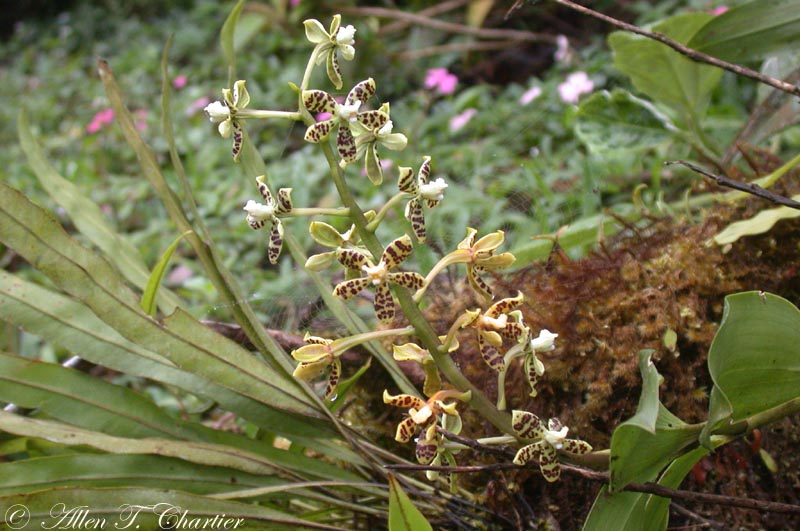
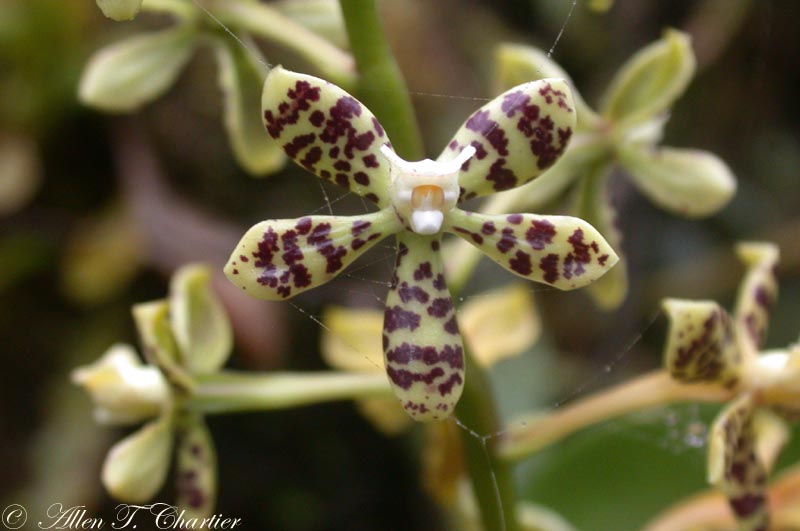
Once I climbed up the small hill where this orchid was growing, I noticed that on the backside of the log was this much smaller, and delicately beautiful orchid, which is most likely Masdevallia chontalensis. We had also seen one of these on the Cerro Gaital trail, but it wasn't in as good a shape as this one was.

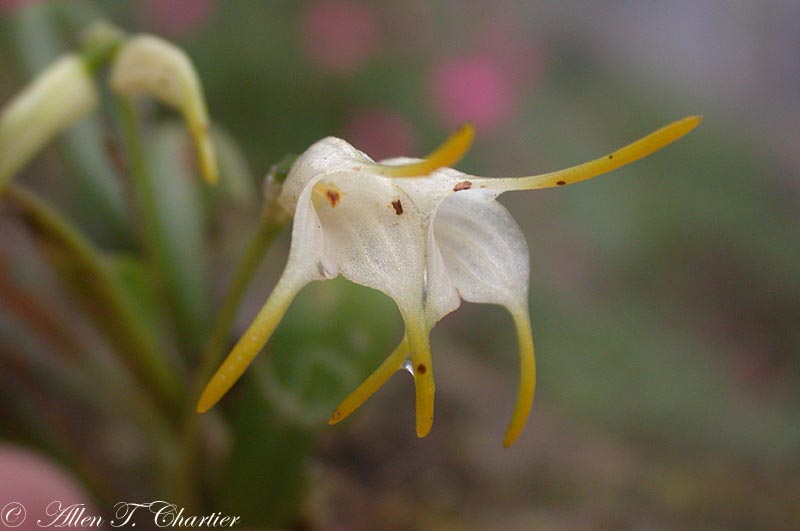
And on a moss-covered snag sticking out into the road, this small yellow orchid was almost overlooked as Tino had to point it out to me. This one is almost certainly Psygmorchis pusilla.
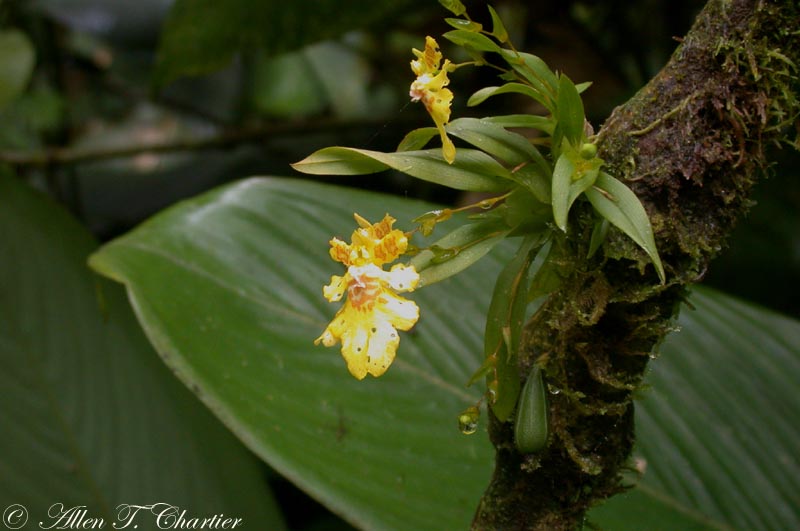
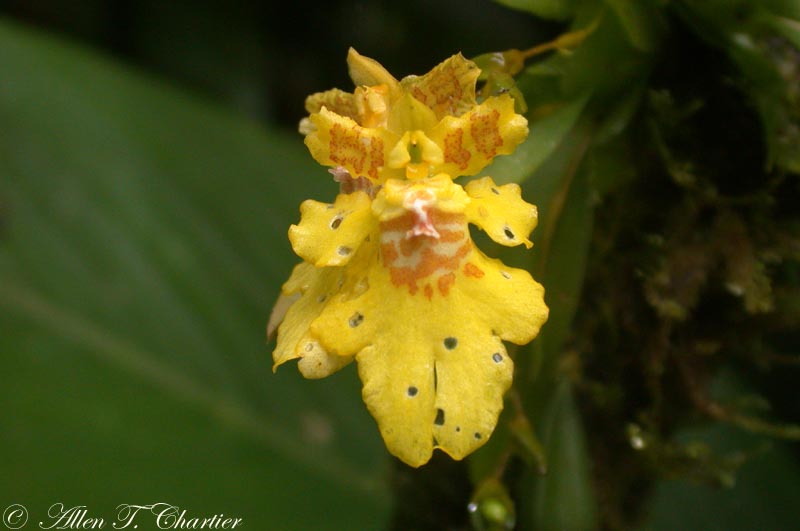
Some of the other plants were quite interesting too. This pink and white flower was atop a 6-foot tall shrub that perhaps would be attractive to hummingbirds, and looked to me like it may have been in the Pea Family (Leguminosae).
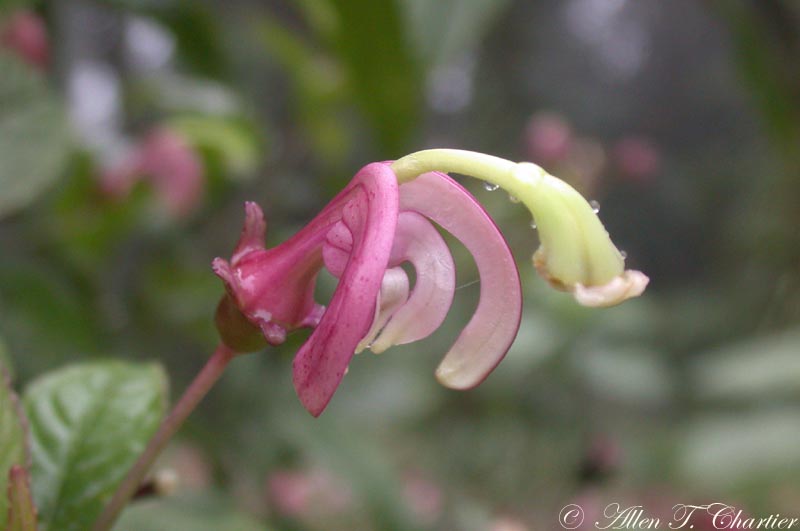
Around one bend, we came upon this wall of heliconia plants, in the mist.
![]()
The birding was excellent, though difficult as nearly every bird seemed to be "on that mossy branch near the top of that tree", and there were thousands of mossy branches! The mist coming and going are one thing that I like about cloud forests, lending them atmosphere in a sensory way not just a physical way. But it makes it more difficult to see the treetops where so many birds like to hang out. Some of the more interesting species we found included Snowcap (hummingbird), Russet Antshrike, Ochraceous Wren, Rufous-browed Tyrannulet, Black-crowned Antpitta (heard only by most of us), and an extreme rarity anywhere in Panama, a flock of tiny Blue-fronted Parrotlets. About the only bird that cooperated for photography was this male Orange-bellied Trogon, taken through Tino's spotting scope, and the thick fog.

As usual, interesting insects were also found. This species of long-necked Weevil (most likely Brentus anchorago) is a beetle that I've found a couple times before. And, as with my prior experiences, this one allowed exactly one photo before taking flight. One of these times I'll get one that sits still for a nice profile photo!
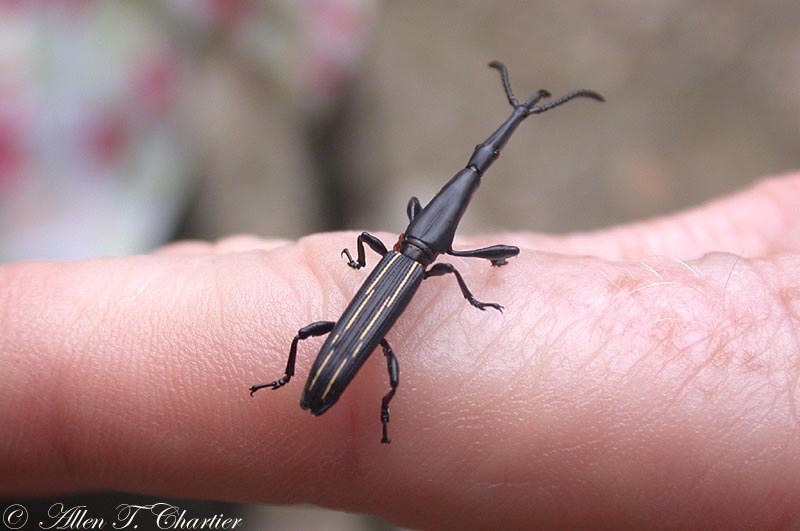
And, even if you're not a beetles fan like I am, this colorful beetle would certainly grab your attention. At first I thought it was a Leaf Beetle (Chrysomelidae: Platyphora boucardi), which was featured on a Panamanian postage stamp, but it doesn't quite match. In fact it may actually be a species of Fungus Beetle (Erotylidae). Any suggestions on correct ID would be most welcome.

While we were watching a mixed flock of tanagers in the mist, Tino also found a Neotropical Dwarf Squirrel, which is not often seen. We watched him closely as he climbed at eye level, then went to the top of a medium-sized tree. We were surprised a moment later to hear leaves crashing and a small "thunk" as the squirrel hit the ground. He'd fallen out of his tree! I've never seen a squirrel fall out of a tree before. He was okay and eventually hopped off into the woods. As had become tradition on the trip by now, and because he was easy to tease, we decided that the falling squirrel was Jeff's fault. Coincidentally, he'd just asked Tino if there were any flying squirrels in Panama!
Another apparently fallen creature was this large, gaudy caterpillar that was on a leaf right in the middle of the road.
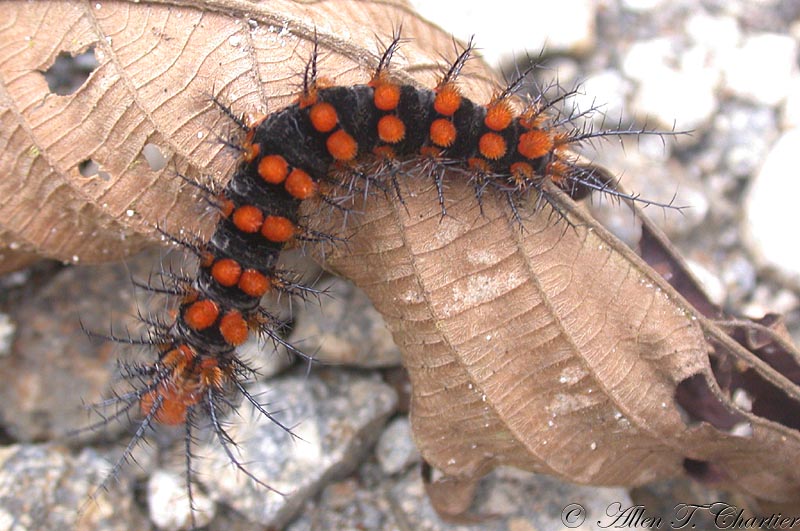
We had lunch near a nice waterfall, which was very pleasant.
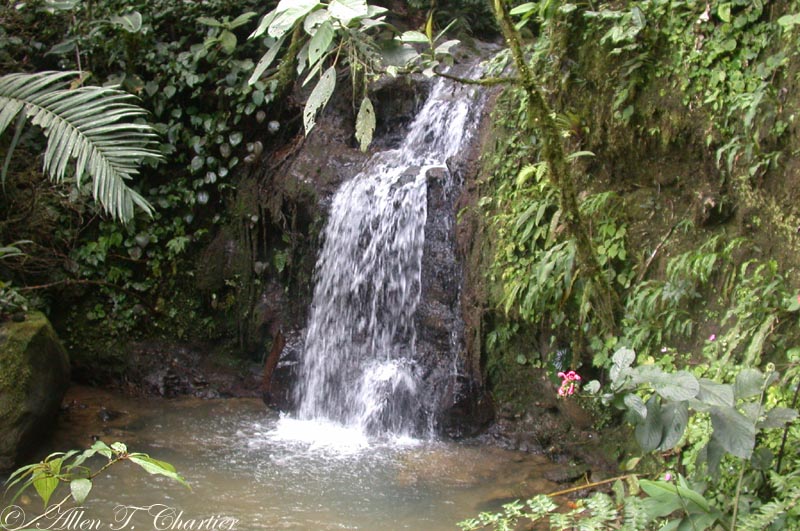
There were a few birds around, and this Bat Falcon flew into one of the highest bare snags in the area and sat nicely for us for most of the time we were here. It was so high up that I had to use Tino's scope to get a photo, but it didn't work out as well as I'd hoped.
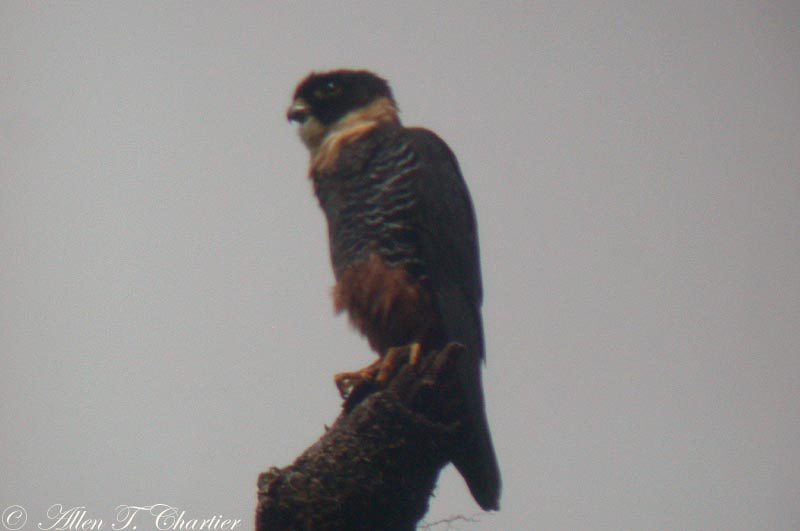
In the rocks near the shelter where we were eating, this small toad came out of hiding providing yet another amphibian identification challenge. I think this one is a Granular Toad (Bufo granularis), but as always I could be wrong.
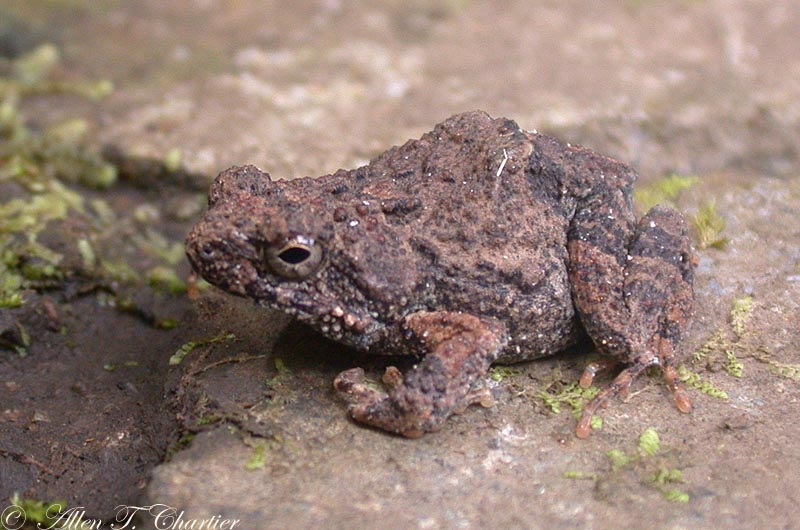
The Leafcutter Ants walking along the railing at the edge of the stream kept some of us amused for a while.
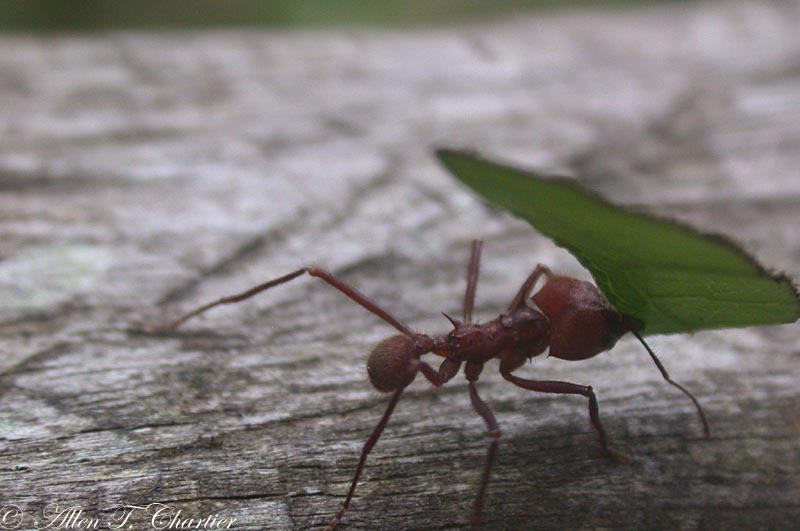
In the early afternoon, we drove back down out of the mountains, heading back for the Canopy Lodge. We stopped in the open lowlands for a little birding on the way, with Pale-eyed Pygmy-Tyrant and Plain-breasted Ground-Dove the best finds. These Groove-billed Anis were very common in the open areas.

At the Canopy Lodge, and after dinner, I tried again to photograph the bats coming in to the hummingbird feeders. But, they weren't as active as they had been last night, so I didn't get any photos. I did notice this tree frog on a branch behind the feeder, visible on the periphery of the spotlight set up near the feeder. I believe this one is a Panama Cross-banded Treefrog (Smilisca sila).
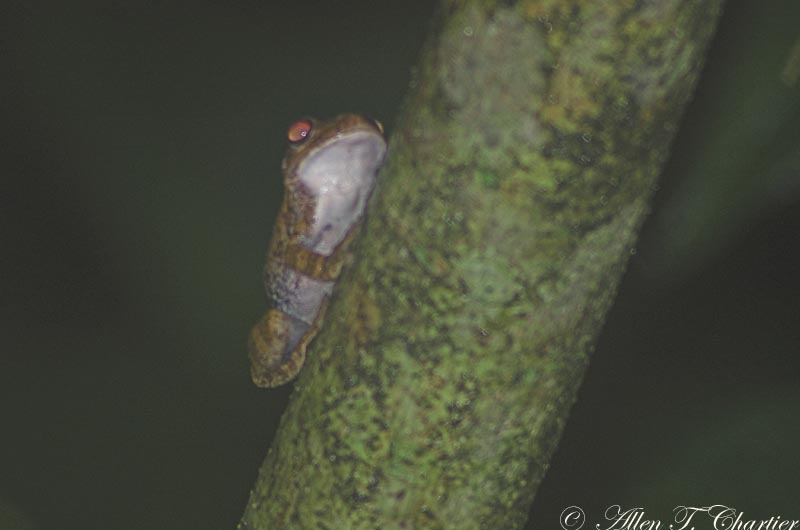
As anyone who has been on a tropical trip with me before knows, I am always checking the walls of our accommodations for interesting insects, especially moths. This trip was not particularly good for moths as perhaps the dry season would have been better (on our Ecuador trip in 2002 I found nearly 40 species of moth!). But, this evening on the way back to my room I found these three moth species. As is usually the case, I have no idea what species any of them is, but I do have a fair idea what families they're in. Luckily, nobody saw me taking these photos, as I might have been mistaken for a stalker!
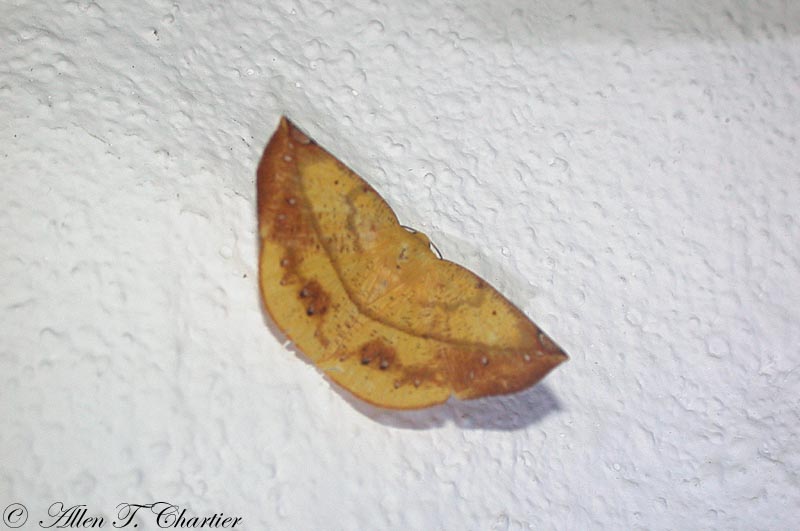
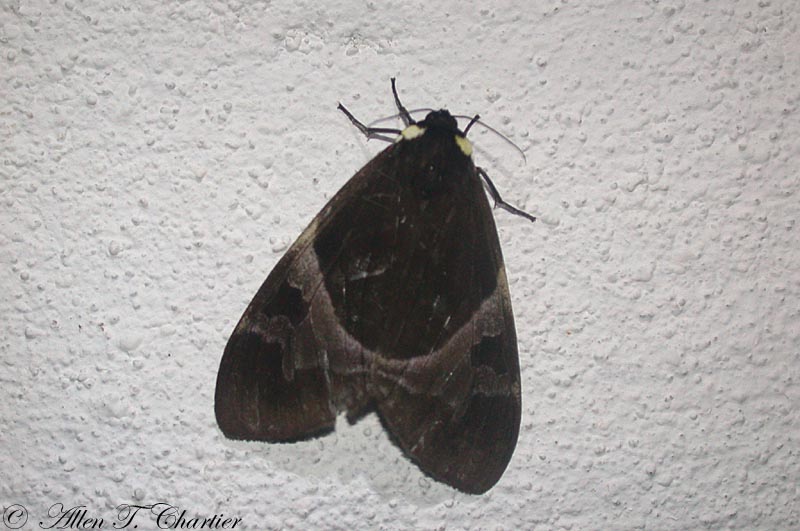
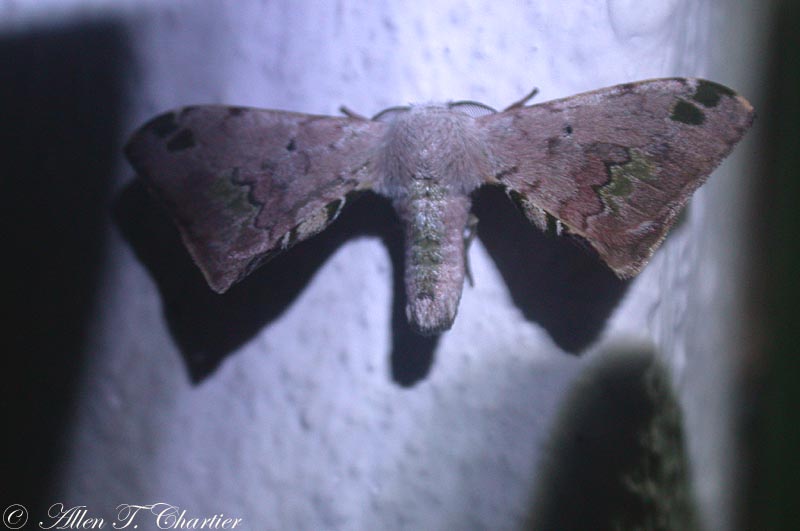
And along with the moths, I found this longhorn beetle (Family Cerambycidae) that I tentatively identified as Xenophrea camixaima, though I'm not even sure I have the genus correct.

115 species for the day, 325 for the trip.
![]()